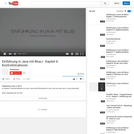
In diesem Tutorial erklären wir euch, was Kontrollstrukturen sind, und wie man sie in Java anwendet.
- Subject:
- Career and Technical Education
- Material Type:
- Lecture
- Provider:
- YouTube
- Author:
- theskylapse
- Date Added:
- 06/16/2015

In diesem Tutorial erklären wir euch, was Kontrollstrukturen sind, und wie man sie in Java anwendet.
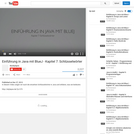
In diesem Video zeigen wir euch die einzelnen Schlüsselwörter in Java und erklären, was sie bedeuten.
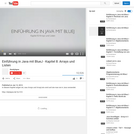
In diesem Kapitel zeigen wir, was Arrays und ArrayLists sind und wie man sie in Java verwendet.
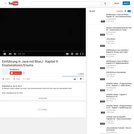
In diesem Video zeigen wir euch, was Enumeratoren sind und wie man sie verwenden kann.

This course proposes that most cities have neither the infrastructure nor the processes in place to support the demographically complex public in fulfilling its role in democracy. Through this course, participants will learn a set of design principles for creating public engagement practices necessary for building inclusive civic infrastructure in cities. Participants will also have the opportunity to review and practice strategies, techniques, and methods for engaging communities in demographically complex settings.

Thank you for visiting our Tennessee Board of Regents OER Grant English 1020: Introduction to Literature course. The pilot launched in spring 2023. This Walters State Community College composition course focuses on reading and analyzing poetry, drama, and short stories. The course has been designed with Quality Matters standards, Universal Design for Learning concepts, Growth Mindset fundamentals, and Lumen Circles concepts.
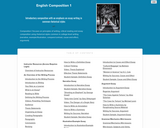
Composition I focuses on principles of writing, critical reading and essay composition using rhetorical styles common in college-level writing (narrative, example/illustration, compare/contrast, cause-and-effect, argument).

The 11th grade learning experience consists of 7 mostly month-long units aligned to the Common Core State Standards, with available course material for teachers and students easily accessible online. Over the course of the year there is a steady progression in text complexity levels, sophistication of writing tasks, speaking and listening activities, and increased opportunities for independent and collaborative work. Rubrics and student models accompany many writing assignments.Throughout the 11th grade year, in addition to the Common Read texts that the whole class reads together, students each select an Independent Reading book and engage with peers in group Book Talks. Students move from learning the class rituals and routines and genre features of argument writing in Unit 11.1 to learning about narrative and informational genres in Unit 11.2: The American Short Story. Teacher resources provide additional materials to support each unit.

In this unit, students will explore great works of American literature and consider how writers reflect the time period in which they write. They will write two literary analysis papers and also work in groups to research and develop anthologies of excellent American stories.
ACCOMPLISHMENTS
Students read and analyze stories from several 19th-, 20th-, and 21st-century American authors. After researching a time period, they select stories from that period to create an anthology. The readings enhance their understanding of the short story, increase their exposure to well-known American authors, and allow them to examine the influence of social, cultural, and political context.
Students examine elements of short stories and have an opportunity for close reading of several American short stories. During these close readings, they examine the ways that short story writers attempt to explore the greater truths of the American experience through their literature.
GUIDING QUESTIONS
These questions are a guide to stimulate thinking, discussion, and writing on the themes and ideas in the unit. For complete and thoughtful answers and for meaningful discussions, students must use evidence based on careful reading of the texts.
If you were to write a short story about this decade, what issues might you focus on?
What defines a short story? Just length?
To what extent do these stories reflect the era or decade in which they were written?
To what extent are the themes they address universal?
CLASSROOM FILMS
History.com has short videos on the Vietnam War (“Vietnam” and “A Soldier's Story”).
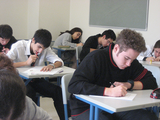
In this lesson, students will spend some time planning their individual essay. Then they will continue working on the group project exploring other American short story writers and their time periods.

The 12th grade learning experience consists of 7 mostly month-long units aligned to the Common Core State Standards, with available course material for teachers and students easily accessible online. Over the course of the year there is a steady progression in text complexity levels, sophistication of writing tasks, speaking and listening activities, and increased opportunities for independent and collaborative work. Rubrics and student models accompany many writing assignments.Throughout the 12th grade year, in addition to the Common Read texts that the whole class reads together, students each select an Independent Reading book and engage with peers in group Book Talks. Language study is embedded in every 12th grade unit as students use annotation to closely review aspects of each text. Teacher resources provide additional materials to support each unit.

In this unit, students will use the engineering design process and their understanding of how simple machines work to help fairytale characters solve problems. Each lesson focuses on one fairytale and one simple machine.

In the Future of Electric Transportation Design Challenge - a soup-to-nuts curriculum toolkit from Construct - you'll ask young people to find new and novel ways to increase use & equitable access to electric vehicles.
This comprehensive toolkit is intended for classroom teachers and other educators interested in running a multi-week or full-term design challenge with students. The guide is written with 8th-9th graders as a target grade level, however this curriculum could easily be adapted for both older and younger students: 5th-12th grade.
An optional feature in this challenge experience is to have students submit their design briefs (anonymously from their teacher) for the opportunity to be recognized by Construct and Industry Leaders interested in their concepts!
A teacher running this Transportation Design Challenge could connect it to multiple standards at multiple grade-levels in multiple subject areas.
Construct has facilitated several cohort-based challenges for middle and high school students, using this toolkit, and we are excited to be able to provide this curriculum at no charge to any interested teachers.
We are happy to answer any questions - you can reach us at info@constructlearns.org. We also offer additional coaching support.
Please download this Challenge and share it with your colleagues! If you opt to run the Challenge in your classroom, we do hope you'll reach back and let us know how it worked for YOU! With your feedback, we'll keep iterating and improving and work to make this a user-friendly, joy-provoking, flexible, rigorous, effective, skills-building and FUN curriculum toolkit for you and your students.
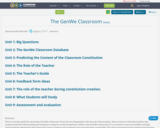
This is a teacher guide for operating a GenWe classroom. From the very beginning to the launch of the program, these resources will help teachers and students build the ideal learning environment to improve social competence. What is the GenWe Classroom? It is an elective course for middle and high school students designed to help them learn how to interact and cooperate and use technology responsibly. The class is managed by the students and teachers collaboratively. The structure of the class allows the students to make decisions based on evaluating the input from peers, near-peers, and adults. In order for normal social situations to occur, the students need to be allowed to manage themselves, including their learning. Ideally the GenWe Classroom will include a budget. Students will be responsible for planning the learning materials they will need for the semester.

An old saying holds that “there are many more good ideas in the world than good ideas implemented.” This is a case based introduction to the fundamentals of effective implementation. Developed with the needs and interests of planners—but also with broad potential application—in mind, this course is a fast paced, case driven introduction to developing strategy for organizations and projects, managing operations, recruiting and developing talent, taking calculated risks, measuring results (performance), and leading adaptive change, for example where new mental models and habits are required but also challenging to promote. Our cases are set in the U.S. and the developing world and in multiple work sectors (urban redevelopment, transportation, workforce development, housing, etc.). We will draw on public, private, and nonprofit implementation concepts and experience.
This course is offered during the Independent Activities Period (IAP), which is a special 4-week term at MIT that runs from the first week of January until the end of the month.
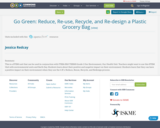
This is a STEM unit that can be used in conjunction with ITEEA EbD TEEMS Grade 2 Our Environment, Our Health Unit. Teachers might want to use this STEM Unit with environmental units and Earth Day. Students learn about their positive and negative impact on their environment. Students learn that they can have a positive impact on their environment when they use the 4 R’s: Reduce, Reuse, Recycle, and Redesign process.
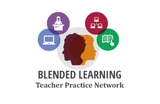
In this problem-based learning module, students will research health issues that are relevant to elementary students k-3. Students will look at perceptions, influences, education, research and discussion.Information will be provided through various ways including direct instruction, small group instruction by the classroom teacher, online research, and real-life research. Students will research media influences on health and develop a student-produced Public Service Announcement that will be shared with their peers as well as k-3 students in the district. Students will also have the opportunity to learn from each other and share their ideas with community stakeholders and plan next steps to promote healthy lifestyles in our community.
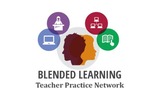
In this problem-based learning unit, the Class will discuss what it means to be empathetic. Then, situations in which empathy is necessary will be role played. Students will then roll 2 dice, one die will determine their audience and the other die will determine the task they are to create a solution to. Sample audience and tasks include creating a tool to access an out of reach object for a child, vision impaired, or person in a wheelchair. Students will hand draw prototypes and then utilize a free online 3D modeling application to design their solutions for sharing.
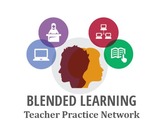
Throughout this problem-based learning module students will address real world skills. Students will be asked to brainstorm ideas and think innovatively both independently and collaboratively in addressing a real-world problem that is relevant to their daily lives and surroundings. Students/teams will be encouraged to use the internet for research purposes in their design phase. What components should be included for a modern, updated classroom? Students will utilize various online platforms to design an ideal, modern, contemporary “dream classroom”. Students will incorporate components that would meet the needs of all learners and a classroom that would be able to integrate technology. These classrooms can be shared with relevant individuals in the community and others in the school building.

Throughout this problem-based learning module students will address real world skills. Students will be asked to brainstorm ideas and think innovatively both independently and collaboratively in addressing a real-world problem that is relevant to their daily lives and surroundings. Students/teams will be encouraged to use the internet for research purposes in their design phase. What components should be included for a modern, updated classroom? Students will utilize various online platforms to design an ideal, modern, 21st century “dream classroom”. Students will incorporate components that would meet the needs of all learners and a classroom that would be able to integrate technology. These classrooms can be shared with relevant individuals in the community and others in the school building.